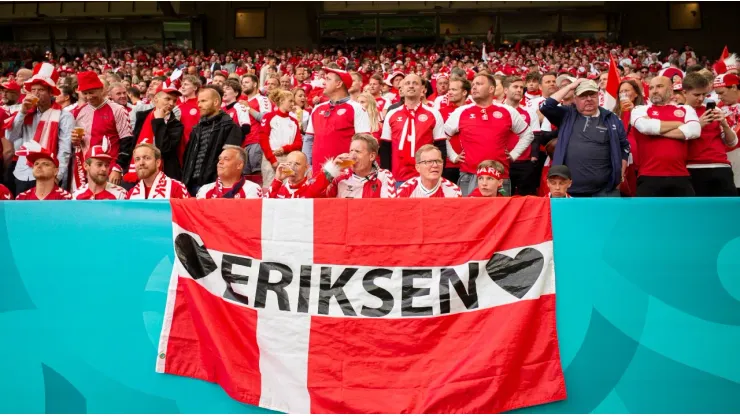
As an eleven-year-old, I was shocked when Marc Vivien Foe collapsed in the midst of an intense soccer match between Cameroon, the darlings of the 2003 Confederations Cup, and Colombia.
Foe had the physique of a titan and was arguably one of the best African midfielders of the time. He was just 28 years old.
This episode marked me. This was a player on the top of his game. A Premier League player. How could he just collapse and die? How can someone lose his life while playing the beautiful game? Could something have been done to prevent this tragedy? Is it safe to play soccer?
Players that have had cardiac arrests
These emotions and questions have come rushing again and again since that fateful night. They came rushing when Miklos Feher collapsed in 2004, when Fabrice Muamba lay lifeless for over 45 minutes in 2012 and when Antonio Puerta lost his life in 2007 after a series of cardiac arrests.
Recently, the world looked on in shock as Danish superstar Christian Eriksen was revived during a Euro 2020 game. Miraculously, Eriksen has since returned to full fitness and is considered as one of the best midfielders in the Premier League.
Why should super fit athlete suddenly collapses? What actually happens to their heart? Can it be prevented? If so, how? Are soccer players suffering from playing too many games?
Whenever such a tragedy occurs on a soccer pitch, many media outlets report that the concerned player had a “heart attack”. This is incorrect.
A heart attack is the lay man’s term to describe a myocardial infarction. A myocardial infarction occurs when a heart artery (i.e. a coronary artery) becomes occluded.
This deprives the heart muscle (i.e. the myocardium) its oxygen supply that is delivered through the coronary arteries.
The result in, quite literally, the death of this heart muscle. Thus, a myocardial infarct is when a section of the heart muscle dies away due to a sudden reduction in blood (and thus oxygen) supply.
This is not what usually happens in these athletes.
Cardia Arrests In Footballers
In most cases, the occlusion of a coronary artery is caused by a combination of a cholesterol plaque within the artery and an overlying blood clot.
Risk factors for this to happened include smoking, an unhealthy diet, lack of exercise and age. You would not expect a professional athlete to tick any of these boxes!
Instead, the cause of these athlete’s sudden collapse would be a rhythm problem in the heart, also known as an arrhythmia.
The heart is divided into four rooms – two small ones called “atria” and two larger ones called “ventricles”. The atria contract as they pump blood into the ventricles. As the atria then relax, the ventricles in turn contract pumping blood to the lungs and to the rest of the body.
The heart muscle contraction and relaxation phases are all made possible by electrical impulses generated within the heart’s own natural pacemaker within the left atrium. This electrical current travels rapidly first to the rest of the atria and then down to the ventricles.
Any abnormality in this electrical current means that the heart fails to contract appropriately. Blood pumping thus fails, resulting in a rapid fall in blood supply to all the vital organs.
Why should the heart electricity fail? What causes an arrhythmia? The answer is a complex one. Different drugs and medications are known to cause arrythmias. However, the commonest cause of a fatal arrythmia is a young, healthy individual is a structural problem in the heart.
For example, Marc Vivien Foe was found to have hypertrophic cardiomyopathy while Antonio Puerta was diagnosed with arrhythmogenic right ventricular cardiomyopathy post-mortem.
Most structural defects can be diagnosed using modern heart imaging techniques. These would include an ultrasound scan of the heart, called an echocardiogram, and Magnetic Resonance Imaging (MRI). However, such defects are not always so obvious and can be easily missed.
Patients with heart conditions that can result in a fatal arrhythmia are usually implanted with an ICD (implantable cardioverter defibrillator). As soon as the ICD detects an aberrant electrical impulse, it sends a shock to the heart muscles with the aim of arresting this electric current and restoring a normal heart rhythm once again.
These heart conditions tend to be genetic. Individuals, not just athletes, who have close relatives that died suddenly and unexpectedly at a young age and/or who have frequent episodes of unexplained black outs are strongly advised to seek medical advise as they may well need to be investigated by a cardiologist.
Remember, fatal, erratic electrical currents (arrythmias) can be potentially reversed by applying a shock from a defibrillator. This is lifesaving. Moreover, when a patient in cardiac arrest is being resuscitated, allowing for blood to keep circulating to the rest of the body while applying chest compressions is vital.
If you are involved in any way soccer, or any other sport for that matter, being proficient in Cardiopulmonary Resuscitation (CPR) is essential. Importantly, cardiac defibrillators need to be easily accessible in all sport premises.
You can visit here for more information about CPR and various heart conditions.
Editor’s note: Julian Delicata is a medical doctor, working in Malta.
Photo credit: IMAGO / Sven Simon
200+ Channels With Sports & News
- Starting price: $33/mo. for fubo Latino Package
- Watch Premier League, Liga MX & Copa Libertadores
The New Home of MLS
- Price: $14.99/mo. for MLS Season Pass
- Watch every MLS game including playoffs & Leagues Cup
Many Sports & ESPN Originals
- Price: $10.99/mo. (or get ESPN+, Hulu & Disney+ for $14.99/mo.)
- Features Bundesliga, LaLiga, NWSL, & USL
2,000+ soccer games per year
- Price: $7.99/mo
- Features Champions League, Serie A, Europa League & EFL
175 Premier League Games & PL TV
- Starting price: $7.99/mo. for Peacock Premium
- Watch 175 exclusive EPL games per season